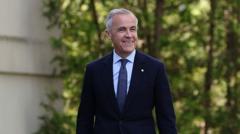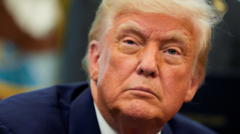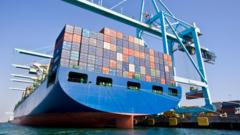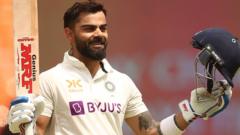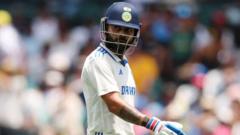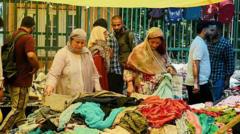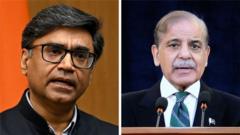With its latest GDP figures showing a decline to 5.4%, economists question whether India, known as the fastest-growing major economy, is losing momentum as challenges such as high inflation, sluggish public investment, and weak consumer demand become increasingly evident.
India Faces Challenges as Economic Growth Slows to Seven-Quarter Low

India Faces Challenges as Economic Growth Slows to Seven-Quarter Low
Recent GDP data reveals India's growth rate has dropped to 5.4%, sparking concerns about potential long-term economic challenges amidst high inflation and subdued consumer demand.
India's economy is facing serious scrutiny as the latest GDP figures reveal a significant drop to 5.4% for the period spanning July to September, marking its lowest rate in seven quarters. This decline, significantly below the Reserve Bank of India's (RBI) expectations of 7%, raises questions about the sustainability of India's reputation as the world's fastest-growing major economy.
Analysts cite multiple factors contributing to this slowdown. There has been a noticeable dip in consumer demand, which is critical to driving economic growth. In addition, private investment continues to be lackluster, having struggled for several years, while a reduction in government spending—once a key driver—has further compounded the issue. India's export performance has also remained underwhelming, with the country holding only a 2% share of global goods exports.
The impact of these challenges is beginning to show in various sectors, notably in consumer goods companies reporting sluggish sales and a decrease in salary bills—a reflection of stagnancy in urban wages. The RBI, once optimistic about growth, has now lowered its forecast to 6.6% for the financial year 2024-2025. Economist Rajeshwari Sengupta remarked on the unfolding situation, commenting, "There's a clear slowdown and a serious demand problem."
Despite the concerning data, Finance Minister Nirmala Sitharaman remains cautiously optimistic, attributing the decline to seasonal government spending reductions during an election quarter and projecting that upcoming data may show an improvement in growth. She is confident that India can maintain its status as the fastest-growing major economy, notwithstanding complications such as stagnant wages, declining global demand, and climate impacts on agriculture.
Inflation remains another pressing issue, with rates reaching 6.2% in October—well above the RBI's target—largely due to rising vegetable prices. High inflation has caused the RBI to maintain elevated interest rates for nearly two years; however, some economists assert that these restrictive rates hinder growth by making borrowing costlier and thus stifling investment.
The dual-track nature of India's economy reveals ongoing disparities, with the informal and traditional sectors still in need of significant reforms while the burgeoning service sector has thrived post-pandemic. This divergence may contribute to inconsistent economic performance, as household consumption shows signs of weakening even amid increased retail credit and loans.
On the international front, rising tariffs have complicated trade dynamics, with India's average tariffs climbing from 5% in 2013-14 to 17% currently—making them higher than those of other Asian peers. Such high tariffs diminish competitiveness in global markets, posing yet another hurdle for exporters.
Despite consulting firms like Deloitte noting India’s emergence as a hub for global capability centers (GCCs)—which have bolstered urban spending—the prospect of sustained economic growth remains uncertain without robust consumer demand and private investment.
Voices of dissent caution against overly positive narratives, urging for tangible reforms to stimulate investment, exports, and job creation. Critics, including former government economic advisors, highlight the need for substantial progress if India is to achieve its ambitious growth targets amid a backdrop of a challenging economic landscape characterized by a per capita GDP still lagging behind developed nations.
Looking ahead, experts suggest bold policy initiatives, including wage increases via government employment schemes and tariff reductions, may be necessary to invigorate consumption and reverse the current economic malaise. Meanwhile, optimistic officials emphasize that underlying economic factors remain strong, hinting at resilience in India's growth story despite present obstacles.




